Jurisdiction de Saint-Émilion: The landscape of Saint-Émilion is dedicated to wine growing. Saint-Émilion is situated in France, about 50 km north-east of Bordeaux. The Jurisdiction de Saint-Émilion stretches around the picturesque town of Saint-Émilion. The medieval town of Saint-Émilion was named after the British monk Émilion, who lived here in the 8th century, the town grew around his hermitage, the Ascum Bas, the former name of the town. In the 12th century, the monolithic church of Saint-Émilion was built over the hermitage of the monk. The hermitage is the oldest monument in Saint-Émilion. The hermitage became a pilgrimage site, numerous pilgrims were attracted by the monk Émilion. The first vineyards in this region were created by the Romans around 275 AD. Saint-Émilion was granted a jusridiction during the period of English rule in the 12th century. Eight towns and villages and their vineyards make up the Jurisdiction of Saint-Émilion. Saint-Émilion is an AOC, Appellation d'Origine Côntrolée, for the wine in the Bordeaux wine region. Saint-Émilion is renowed for producing some of the finest wines in the world. Saint-Émilio was the first wine region in the Bordeaux to export their wines and is home to some of the most prestigious wine châteaux in France, such as Cheval Blanc and Ausône. The Saint-Émilion region is located on the pilgrimage route to Santiago de Compostela, many monasteries, churches and hospices were built over the centuries. The Saint-Émilion region is famous not only for its wines but also for its Romanesque churches and numerous other monuments. The Jurisdiction de Saint-Émilion was declared a UNESCO World Heritage in 1999. Two other renowned French wine regions also have been listed by the UNESCO: the Champagne Hillsides, Houses and Cellars, and the Climats, the terroirs of Burgundy.
www.werelderfgoedfotos.nl © Copyright World Heritage Photos classic car road trip
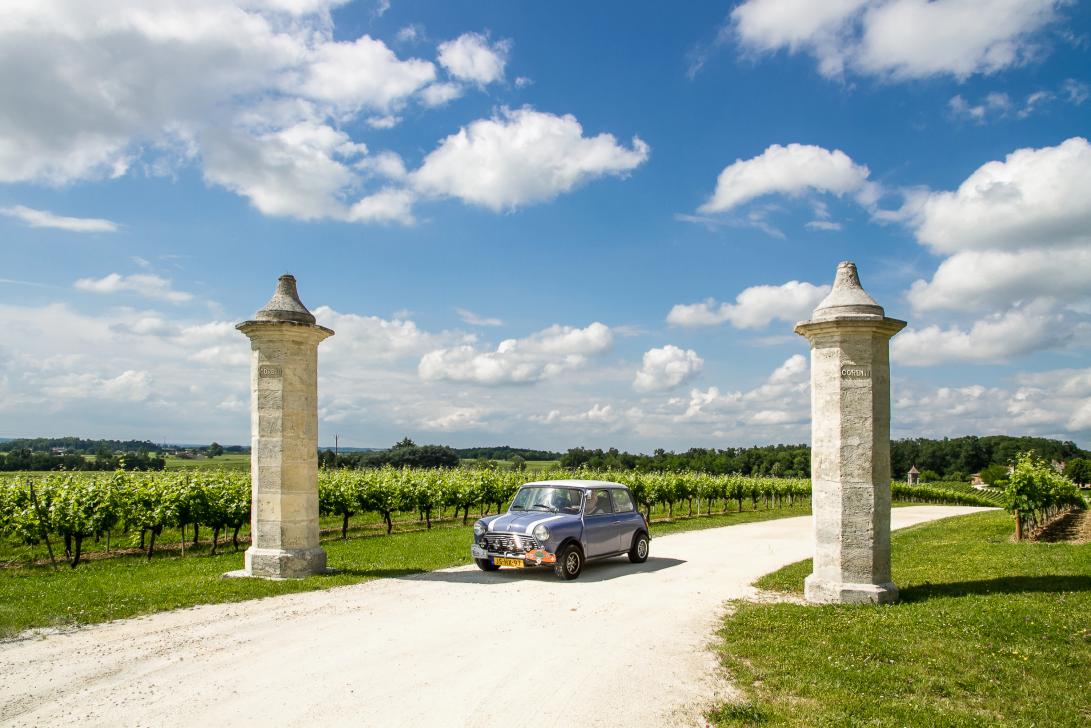
Jurisdiction de Saint-Émilion: A classic Mini in the vineyards of Château Corbin, a wine château in the Saint-Émilion wine region. The first vineyards in the Saint-Émilion wine region were created by the Romans around 275 AD. Today, the wine region is home to some of the most prestigious wine châteaux in France. Saint-Émilion is one of the most important wine areas of the Bordeaux wine region. The Jurisdiction de Saint-Émilion was declared a UNESCO World Heritage in 1999.

Jurisdiction de Saint-Émilion: A classic Mini in the vineyards of Château Corbin, a wine château in the Saint-Émilion wine region. The first vineyards in the Saint-Émilion wine region were created by the Romans around 275 AD. Today, the wine region is home to some of the most prestigious wine châteaux in France. Saint-Émilion is one of the most important wine areas of the Bordeaux wine region. The Jurisdiction de Saint-Émilion was declared a UNESCO World Heritage in 1999.
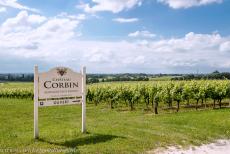
Jurisdiction de Saint-Émilion: The vineyards of Château Corbin, the estate dates back to the 15th century and is one of the oldest wine estates in the Saint-Émilion region. The Grand Cru Classé estate is situated on the edge of the Pomerol and Saint-Émilion boundery. In the 15th century, Château Corbin was part of a stronghold of the eldest son of King Edward III of England, Prince Edward of Woodstock, also known as the Black Prince.
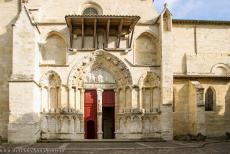
Jurisdiction de Saint-Émilion: The façade and main portal of the Collegiate Church of the town of Saint-Émilion. The church was built in the Romanesque style. The construction started in 1110. The transept and other parts of the Romanesque church were transformed into the Gothic style between the 13th and 15th centuries. The façade of the church is still in the Romanesque style. Members of the nobility were buried in the cloister of the church.
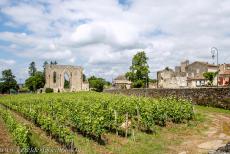
Jurisdiction de Saint-Émilion: Les Grandes Murailles, the Great Wall, in the small town of Saint-Émilion, the wall is the last remaining part of a large 12th century Dominican monastery. Les Grandes Murailles is surrounded by the vineyards of a small wine chateau with the same name. In the medieval period, the town of Saint-Émilion was protected by fortified walls, built between 1120-1224. Saint-Émilion is renowned not only for its wines, but also for its historic monuments.
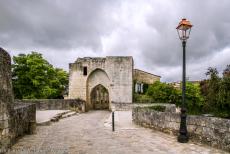
Jurisdiction de Saint-Émilion: La Porte Brunet, the Brunet Gate, is the east gate of the medieval town of Saint-Émilion. The Brunet Gate, the ramparts and the defensive walls were built by the English in the 12th century to protect the prosperous town. The medieval wall originally had six gates. Nowadays, the Brunet Gate is the only remaining gate, the majority of the ramparts and gates of Saint-Émilion were destroyed during the French Wars of Religion in the 16th century.
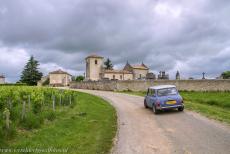
Jurisdiction de Saint-Émilion: A classic Mini driving through the vineyards of the Saint-Émilion wine region, the church of the wine-producing town of Saint Hippolyte in the background. The Romanesque church is surrounded by the vineyards of the Greater Saint-Émilion region. The 14th century choir of the church was originally the chapel of Château Saint-Poly. The tower was built in 1783. The vineyards of Saint Hippolyte produces several Saint-Émilion Grand Cru wines.
